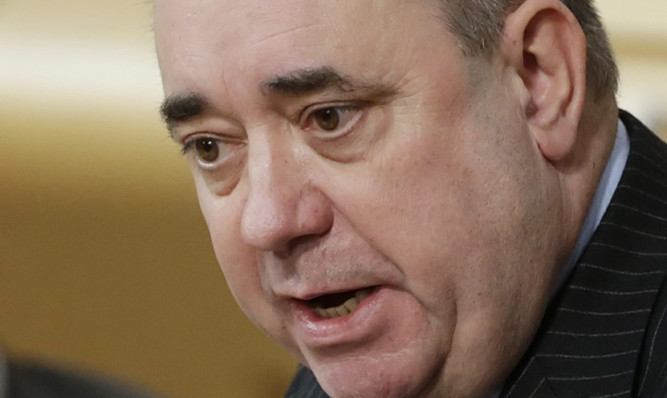Alex Salmond has defended plans to keep the pound in an independent Scotland as he was challenged to set out ‘plan B’ for the country’s currency.
Labour leader Johann Lamont said the First Minister refused to rule out Scotland having a separate currency if people vote to leave the UK.
She challenged him after a former member of the Scottish Government’s Council of Economic Advisers said the country should be ready to adopt its own currency if it becomes independent.
Leading economist Professor John Kay said it could be difficult to negotiate an agreement on keeping the pound that would give Scotland the fiscal freedom sought through independence.
Ms Lamont hit out at the First Minister’s “risk-rich, assertion-rich, fantasy-rich plans” for Scotland.
“The First Minister asserts we could keep sterling but what would he do if the deal on offer from the Bank of England was unacceptable? What would he do if the fiscal constraints were too tight? What would he do if there were strings imposed by London?
“Would he go for a separate Scottish currency? Would the First Minister go for a separate Scottish currency, or then join the euro?
“His own advisers say he would need a plan B and we are entitled to know what it is. He must have one in private. It’s time he made it public.”
Mr Salmond said: “I think the difficulty for Johann Lamont is she doesn’t have a plan A, never mind a plan B.”
He said she “doesn’t seem to have read the report” by the Fiscal Commission Working Group, a group of economics experts tasked by the First Minister to examine the economic challenges for Scotland in the event of independence.
Its first report, published last month, argued that keeping the pound would be both sensible and an attractive choice for the rest of the UK.
Mr Salmond said: “We are in favour of Scotland continuing in a sterling area and we have set out the reasons for that in the Fiscal Commission report which, by any estimation, is a huge and serious piece of analysis.”
Ms Lamont told the SNP leader that Prof Kay “says Scotland should be ready to adopt an independent currency”.
She said: “Professor Kay also said a new currency would have to be done quickly or people could move their money out of Scotland before it is launched.”
She asked: “Does the First Minister agree with his adviser, or will he now rule out a separate Scotland having its own currency?”
Mr Salmond told her the commission, which includes two Nobel prize-winning economists, “explained exactly what the best policy for Scotland was in terms of currency and a sterling area”.
He said: “Not only does Johann Lamont not listen to what I say at First Minister’s Questions, she doesn’t bother to read the report of the Fiscal Commission, which is exactly why we commissioned that serious piece of work.
“That puts forward the Government’s policy and does so in a serious and comprehensive way.”
